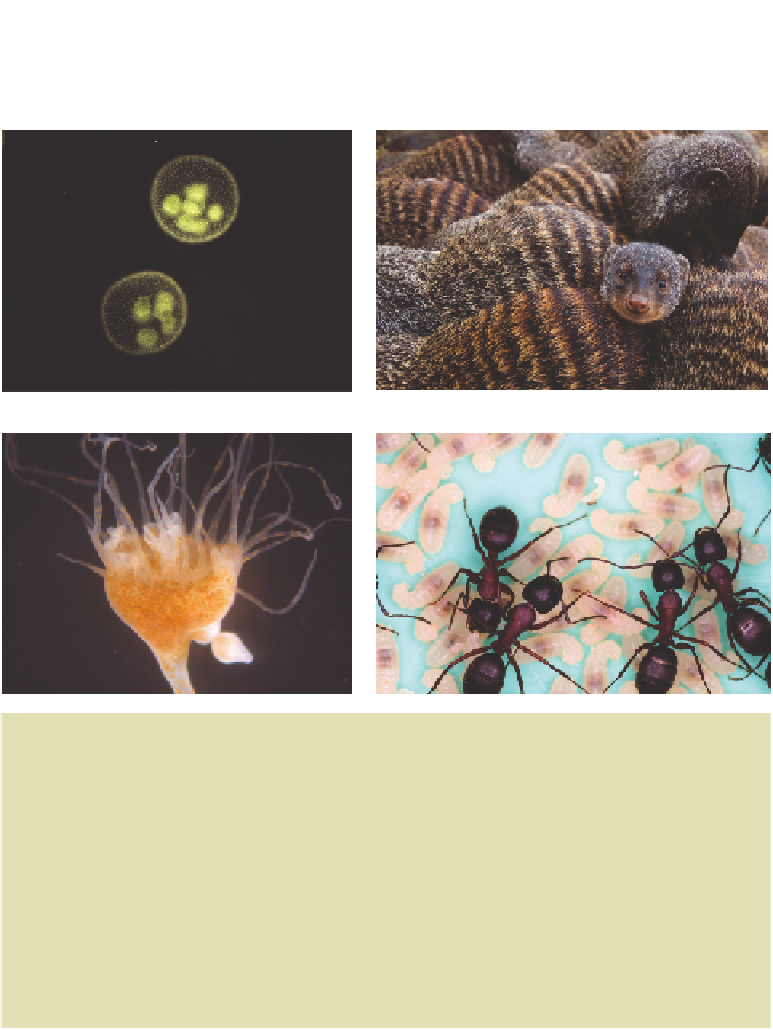Biology Reference
In-Depth Information
(a)
(b)
(c)
(d)
Fig. 12.1
Cooperation. (a) Cells of the algae
Volvox carteri weismannia
form cooperative
spherical multicellular groups, which contain up to 8000 small somatic cells arranged at the
periphery and a handful of much larger reproductive (germ) cells. This distinction between
somatic and reproductive cells is analogous to that between workers and reproductives in
the eusocial insects. Photo © Matthew Herron. (b) Banded mongooses (
Mungos mungo
)
live in cooperative mixed sex groups of about 7-50 individuals across a large part of East,
Southeast and South-Central Africa. Photo © Andrew Young. (c) An upside-down jellyfish
(
Cassiopea xamachana
) infected with its algal symbiont (
Symbiodinium microadriatum
).
The algae (orange in the photograph) provide the jellyfish with photosynthates in exchange
for nitrogen and inorganic nutrients. Photo © Joel Sachs. (d) In social insects, such as this
ant species
Camponotus hurculeans
, some individuals give up the chance to breed
independently and instead raise the offspring of others. Photo © David Nash.
useful to think of this as cooperation, as the elephant produces dung for purely selfish
reasons (emptying waste). The production of dung would only qualify as cooperation if
a higher level of dung production had been favoured, because of the benefits to dung
beetles. The definition of cooperation therefore includes all altruistic (
A behaviour is
cooperative if it
benefits another
individual and has
been selected for
because of that
benefit
−
/
+
) and some
mutually beneficial (
) behaviours (Box 11.1).
Cooperation can take many different forms in different organisms (Fig. 12.1).
In cooperative breeding vertebrates, such as meerkats or Florida scrub jays,
individuals often live in groups that include the dominant pair, which do most of the
breeding, and the subordinates who help care for the young (Hatchwell, 2009;
+
/
+





























